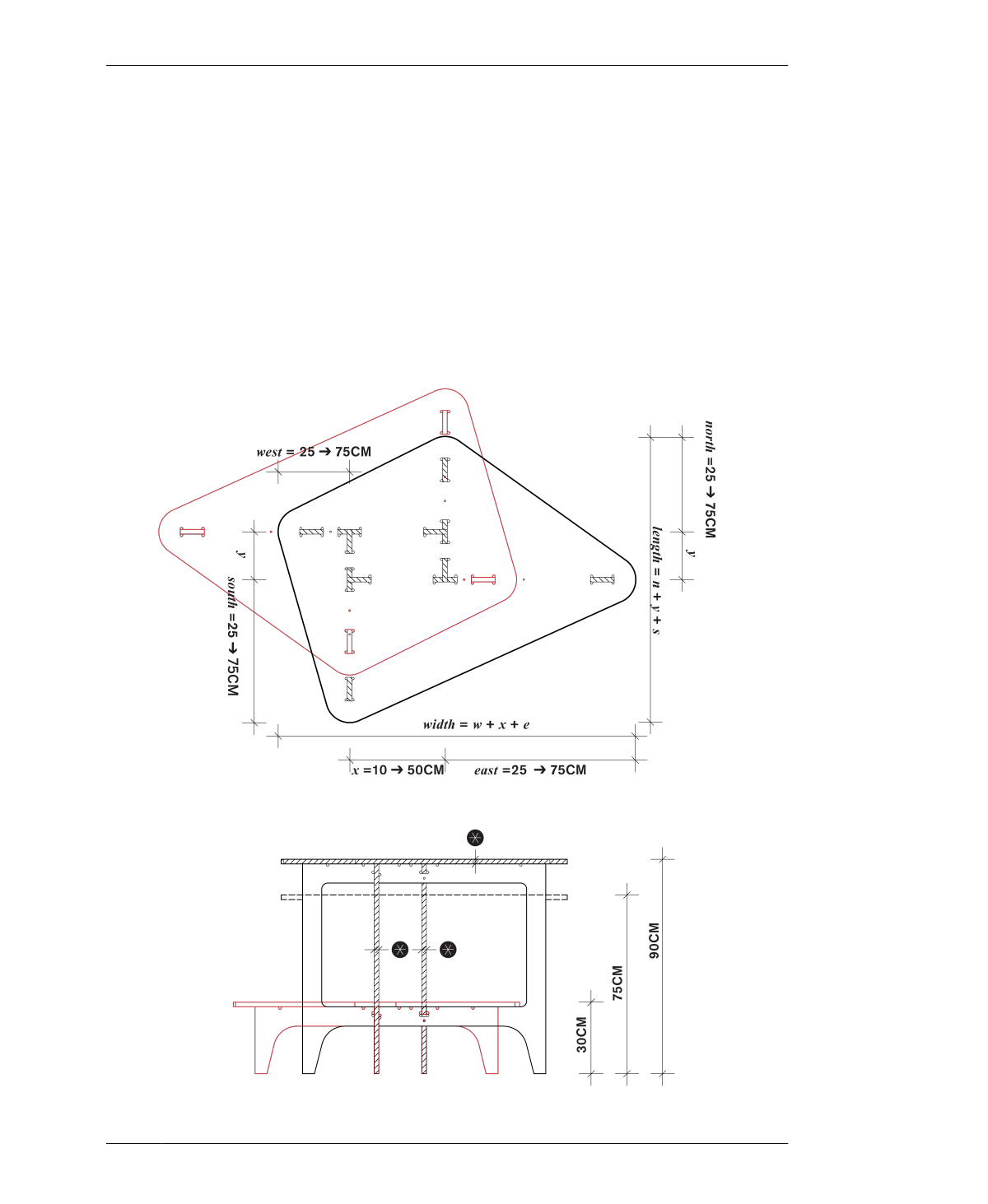
PARAMETRIC CASE STUDY: THE CAT IN BAG II TABLE
The table’s rotational structure is shaped by
the tabletop’s corners. Whenever you stretch a
corner toward or away from the center, the
table leg and frame moves with it, always main-
taining a set distance from the rounded corner.
FUNCTIONS, VARIABLES, AND LIMITS
To understand the table in parametric terms, it
helps to break it down as an equation of func-
tions, constants, variables, and limits. The Cat
in Bag ii Table has only two part types: the legs
and the tabletop. However, numerous table ver-
sions emerge from these two simple parts.
Functions
The Cat in Bag ii’s four identical legs lock into
the tabletop with three tabs. Two of these tabs
form a three-way connection with the other legs
at the center of the tabletop. The third tab
forms a through connection near each of the
tabletop’s rounded corners. Parametrically
speaking, each interrelated tabletop and leg
FIGURE 12-8
Parametric equation for
the Cat In Bag ii Tab-
letop
FIGURE 12-9
Material thickness and
height parameters for
the Cat in Bag ii, and
taller Cat in Bag iii,
Table
12/PARAMETRIC DESIGN
259
